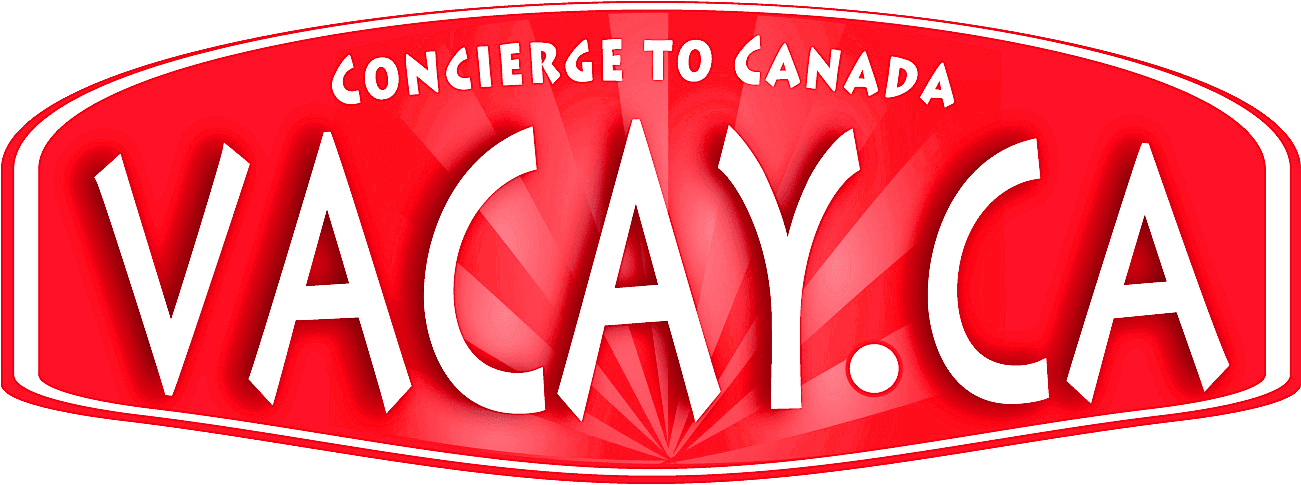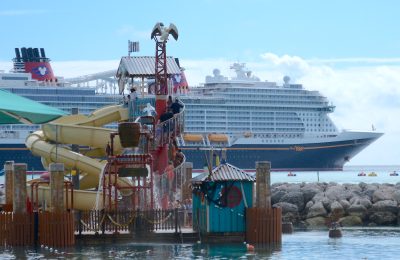
To canoe in Canada is to get close to nature and the great beauty of our country. (Julia Pelish/Vacay.ca)
Story by Karen Evenden
Vacay.ca Writer
Canada has the largest surface of freshwater of any country in the world, with an estimated 32,000 lakes larger than three square kilometres and an unknown number of rivers.
The choices of waterways for the novice, intermediate or expert canoeist are numerous. With some help from Paddle Canada and other experts, Vacay.ca picked out these 10 that deserve notable mention as we prepare to get outdoors and enjoy paddling around the nation this summer.
Terra Nova National Park, Newfoundland & Labrador
Newfoundland’s first national park offers canoeists a choice of 200 kilometres of breathtaking coastlines, and numerous salmon-filled rivers, lakes and ponds. With stunning boreal forest and abundant wildlife opportunities, Terra Nova National Park is a hit for nature seekers. Depending on the time of year, paddlers can expect to see icebergs, whales, eagles, moose and black bear, all within easy access.
Route bleue de la Gaspésie, Quebec
With a number of stunning parks and rivers in Quebec, picking just one spot in the province is tough but the rugged beauty, quaint character and easy accessibility of Gaspésie region makes it a top spot. Suitable for beginners, intermediates and experts, the Route bleue de la Gaspésie boasts the largest navigable network in Quebec with 700 kilometres of shoreline and a circuit to suit every ability. Paddlers can expect to see sea mammals, bird life and a striking urban skyline.
Quetico’s Hunters Island, Ontario
Quetico Provincial Park in northwest Ontario lays claim to more than 600 lakes and 2,000 wilderness campsites. The 10-day Hunter’s Island loop is the top choice in Ontario for Kevin Callan, Paddle Canada’s resident canoeing expert. “This is an ultimate trip that should be done by all canoe enthusiasts,” says Callan. Canoeists must have a permit and reservation to paddle and camp in the in the park.
French River, Ontario
Paddle Canada also recommends French River in Ontario as one of the best family canoeing spots. Stretching 105 kilometres, the river runs from Lake Nipissing to Georgian Bay and is a haven for fishing, canoeing, birdwatching and photography. The river has a rich history and was a prime waterway for First Nations, French explorers and missionaries. “The French River involves countless route possibilities and you feel a true sense of history while paddling the routes of the voyageurs,” says Callan.
Bloodvein River, Manitoba
Classified as part of the Canadian Heritage Rivers System to preserve its unspoiled, natural rugged beauty, Bloodvein River is a white-water river that flows 200 kilometres from the Manitoba/Ontario boundary, through the Atikaki Provincial Wilderness Park to Lake Winnipeg. This river is certainly not for beginners as Corinna Kuhnert, co-owner of Timberwolf Tours, confirms. “Many of our experienced paddling guides have raved about Bloodvein — wilderness, rapids and fun canoeing.”
Clearwater River, Saskatchewan
Clearwater River is becoming a popular spot for paddlers looking for spectacular scenery, waterfalls, challenging rapids and historic significance. Designated a Canadian Heritage River in 1986, Clearwater River played a major role in the development of the western fur trade as pioneers followed the Methye Portage across the continental divide to the only westward-flowing river between Winnipeg and the Rocky Mountains.
Red Deer River: Red Deer to Drumheller, Alberta
Rated as a novice paddle, the trip from Red Deer to Drumheller is perfect for families and is guaranteed to be a jaw-dropping experience. The four-day trip follows the river south through farms, ranches, early settlements and the stunning Canadian Badlands, home of more paleontologically significant locations than most places on earth. Paleontologists have been paddling the Red Deer River through the historic Badlands since before the Great Canadian Dinosaur Rush in 1909.
Athabasca River: Jasper National Park to Whitecourt, Alberta
The Athabasca River water source comes from the Columbia Glacier in Jasper National Park and gained its name from the Woods Cree word aðapaskāw meaning “(where) there are plants one after another.” The river was a popular hunting spot for First Nations tribes prior to European settlement and was designated a Canadian Heritage River in 1989, for its role in the fur trade and the opening up of the Canadian West. The Athabasca is considered an intermediate trip as constant river “reading” is required. Timberwolf Tours offers guided tours on this route.
Nahanni River, Yukon
With 70 known rivers it’s no surprise that Tourism Yukon describe the territory as “a paddler’s smorgasbord.” With some of the best wilderness scenery in Canada, there could easily be a top 10 in the Yukon alone. The Nahanni River is Corinna Kuhnert’s top pick, “scenic, scenic, scenic, scenic … and not for beginners!” The Nahanni National Park is famous for the Naha Dehe (the South Nahanni River), which in 1978 was declared the first World Heritage Site by the United Nations. This stunning white-water river takes paddlers through mountainous valleys, rapids, waterfalls and fascinating geological features. One Nahanni enthusiast was Pierre Trudeau who paddled the river in 1970. It is highly recommended that only very experienced canoeists attempt this trip.
Bowron Lake Canoe Circuit, British Columbia
Known worldwide, the Bowron Lake Circuit in British Columbia attracts paddlers from all across North America and Europe. Located in the Bowron Lake Provincial Park, in the Caribou Mountains, the circuit consists of a chain of nine lakes stretching over 116 kilometres and seven portages. The park, an hour northeast of Vancouver, has a diverse range of pristine wilderness scenery, making it one of the most popular canoe destinations in the world.
Planning to take the family on a canoe trip this Victoria Day weekend or coming up soon? Kevin Callan of Paddle Canada offers these essential canoeing tips to ensure your family trip is a success:
-

Get kids involved in planning your canoe trip and it will be more fun, Paddle Canada experts say. (Julia Pelish/Vacay.ca)
Ensure the route isn’t lengthy, you’ve got only 2-4 hours of good paddling in with kids under 12 before they get bored.
- Plan ahead and make sure the route is not too rugged or you will end up carrying most of the kids gear.
- Plan to camp on sandy beaches where possible; more comfortable and fun for children.
- If your trip includes a portage or two, this will make the trip more interesting for kids.
- Plan a route with interesting places to see along the way; make up some “must-sees” if you have to.
- Make sure that the kids are part of planning the trip and get them involved in designing the route.
- Take a fishing rod! If they can catch fish along the way this adds a fun element.
The above list is just 10 of Vacay.ca’s favourite places to canoe, but it’s often easy to rent equipment and paddle on local ponds or lakes. Contact a local canoe guiding company for expert advice and guided trips. PFDs (personal flotation devices), paddles and camping equipment (where required) are usually provided by the guide company.
Have a favourite canoe spot of your own? Email editors@vacay.ca about it and you just may win a travel prize!







5 Comments
todd lucier
May 18, 2012 at 6:14 pmI clearly can’t be the first person who thought – the most visited canoeing destination in Canada would at least be mentioned, if not featured at the top of the list… come on people – Ontario’s Algonquin Park is perennially top of mind to canoe trip minded folks in Ontario, across Canada and indeed around the world.
Vicky Vacay
May 19, 2012 at 5:23 amHi Todd,
Algonquin’s great. We think you’ll be very happy to see what Vacay.ca has planned for the coming weeks and months concerning Algonquin, even though it didn’t make this list. Thanks for your thoughts — and keep them coming!
Vicky!
Canada's Boomergirl
May 18, 2012 at 7:59 pmFrontenac Provincial Park, 45 minutes north of Kingston, Ontario. Part of the Frontenac Arch. Topographically stunning Canadian Shield country yet minutes from Highway 401 access. Back-country camping in this park can be as close as a ten minute walk or paddle in this park. Better still, the park offers workshops including one on how to back country camp, http://www.frontenacpark.ca/
Alex
March 27, 2013 at 5:40 amYou said Bowron Lakes Park is 1 hour northeast of Vancouver… did you mean by plane?? It takes at least 7 hours to get from Vancouver to Quesnel, the nearest major settlement to Bowron, and then maybe 2 hours drive from Quesnel to Bowron. Read more about Bowron Provincial Park here:
http://www.jetturtle.com/park/bowron_lake_provincial_park
Pingback:
April 5, 2013 at 2:43 pm